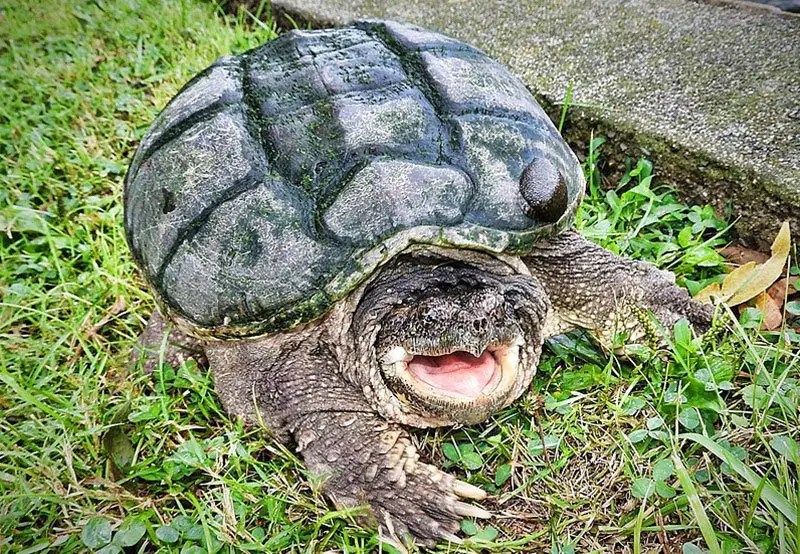The common snapping turtle, known for its distinctive appearance and behavior, has been a subject of fascination and concern among wildlife enthusiasts and conservationists alike. This ancient species, which has existed for millions of years, is facing various challenges in its natural habitat. In this article, we will delve into the recent news surrounding common snapping turtles, including their conservation status, habitat changes, and interesting behaviors that make them unique.
As urban development expands and environmental conditions shift, understanding the plight of the common snapping turtle becomes increasingly important. These reptiles are not only vital to their ecosystems, but they also provide insights into the health of the environments they inhabit. By discussing current news and research regarding common snapping turtles, we aim to raise awareness about their conservation needs and promote responsible interactions with these creatures.
This comprehensive guide will cover various aspects of common snapping turtles, including their biology, habitat, threats they face, and conservation efforts in place to protect them. Whether you are a long-time admirer of these fascinating reptiles or new to the subject, this article aims to provide you with valuable information and insights. Let’s dive into the world of common snapping turtles!
Table of Contents
- Biography of the Common Snapping Turtle
- Personal Data and Biodata
- Biology and Behavior
- Habitat and Distribution
- Threats to the Common Snapping Turtle
- Conservation Efforts
- Recent News and Studies
- Conclusion
Biography of the Common Snapping Turtle
The common snapping turtle (Chelydra serpentina) is one of the most recognizable turtle species in North America. Known for its large size, powerful beak, and aggressive behavior when threatened, this turtle has a unique place in both ecosystems and popular culture.
Characteristics
Common snapping turtles can weigh between 10 to 35 pounds, but some individuals have been known to exceed 50 pounds. They have a rugged shell and a long tail, which can be nearly as long as their body. Their coloration varies from dark brown to olive green, providing effective camouflage in their natural habitats.
Personal Data and Biodata
| Attribute | Details |
|---|---|
| Scientific Name | Chelydra serpentina |
| Common Name | Common Snapping Turtle |
| Family | Chelydridae |
| Habitat | Freshwater environments such as ponds, rivers, and swamps |
| Diet | Omnivorous; feeds on aquatic vegetation, insects, fish, and small mammals |
| Conservation Status | Least Concern, but threatened in certain areas |
Biology and Behavior
Common snapping turtles are primarily aquatic but can often be found basking on logs or rocks. They are known for their powerful jaws, which they use to capture prey and defend themselves. Snapping turtles can be surprisingly fast in the water, making them adept hunters.
Reproduction
The mating season for common snapping turtles typically occurs in the spring. Females will lay their eggs on land, often in sandy or loose soil. The eggs will incubate for several months before hatching, with the temperature influencing the sex of the hatchlings. Warmer temperatures tend to produce more females, while cooler temperatures yield more males.
Habitat and Distribution
Common snapping turtles are widely distributed across North America, found in a range of freshwater habitats. They prefer slow-moving waters, such as ponds, marshes, and the edges of lakes and rivers. Their adaptability to different environments has allowed them to thrive in both rural and urban settings.
Environmental Importance
As scavengers, common snapping turtles play a crucial role in their ecosystems by helping to maintain the health of aquatic environments. They consume carrion and control populations of fish and amphibians, contributing to a balanced ecosystem.
Threats to the Common Snapping Turtle
Despite their adaptability, common snapping turtles face several threats that impact their populations. Key threats include:
- Habitat loss due to urbanization and agricultural development
- Pollution of waterways, which affects their health and food sources
- Road mortality, as turtles often cross roads during nesting season
- Illegal collection for the pet trade or for use in traditional medicine
Conservation Efforts
Various organizations and governmental bodies have initiated conservation efforts to protect common snapping turtles and their habitats. These efforts include:
- Habitat restoration projects to improve water quality and availability
- Public education campaigns to raise awareness about the importance of turtles
- Research initiatives to monitor populations and assess health
- Legal protections in certain areas to prevent overharvesting and habitat destruction
Recent News and Studies
Recent studies have highlighted the importance of common snapping turtles in understanding environmental changes. Research has shown that these turtles can serve as bioindicators, providing insights into the health of freshwater ecosystems.
Additionally, news reports have emerged about community efforts to create safe passageways for turtles during nesting season, reducing road mortality rates. These initiatives demonstrate the growing recognition of the need to protect these remarkable reptiles.
Conclusion
Common snapping turtles are fascinating creatures that play a vital role in their ecosystems. Despite facing numerous threats, ongoing conservation efforts and public awareness initiatives are crucial for ensuring their survival. By understanding their biology, behavior, and the challenges they face, we can contribute to the protection of common snapping turtles and the environments they inhabit.
We encourage you to share your thoughts on common snapping turtles in the comments below and explore more articles on wildlife conservation. Together, we can make a difference in protecting these remarkable reptiles!
Penutup
Thank you for taking the time to read about common snapping turtles! We hope you found this article informative and engaging. For more insights into wildlife and conservation efforts, we invite you to visit our site regularly. Your interest and awareness are key to preserving the natural world.




